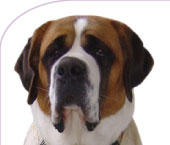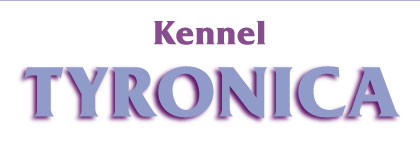HISTORY
The Saint Bernard appears to originate from native dogs that have been present in the Alps for millenia. Roman armies crossed into Switzerland in the second century possibly bringing with them an infusion of Mastiff-type dogs. These dogs form the background of today's Swiss breeds, including the Saint Bernard. As with all modern Swiss breeds, (including Bernese Mountain Dogs, Great Swiss Mountain Dogs, Entlebuch Cattle Dogs, and Appenzell Cattle Dogs) these dogs were used for a variety of duties including guarding, herding, and drafting. By 1000AD, these ancestral dogs were apparently well known and referred to as "Talhund" (Valley Dog) or "Bauernhund" (Farm Dog) by this time. They came in a variety of sizes and shapes.
CHARACTERISTICS AND TEMPERAMENT
Known as the giant dogs that rescue people in the Swiss Alps, St. Bernards are much loved as gentle family dogs with big hearts and friendly temperaments. But think seriously about it before you decide to bring one into your family. Saints require as much love and devotion as they give in return. Their size alone dictates the need for basic manners and early obedience training. The fact that they can rest their heads on the kitchen table demands that they be taught their limits. Although Saints dearly love to be with the family children, their sheer size requires close supervision. They would never intentionally harm one of their small charges, yet a huge paw or powerful tail can accidentally knock a child over. They are enthusiastic participants in any family activity, and will sulk if not included. Saints seldom bark without good reason. They are good watchdogs and protectors of their faimily, but should never be thought of as a guard dog.
Because they are slow to mature, Saints should not be pushed too rapidly into formal and serious training for the strenuous activities of weight pulling, high jumping and broad jumping. Their giant sized bones do not finish growing until two years of age. Activities as simple as jumping in and out of pick up trucks can permanently damage a Saint's soft bones. For this reason, a Saint Bernard should not be asked to jump or pull heavy loads before two years of age.
BREED STANDARD
Shorthaired:
Coat is very dense, short-haired ( stockhaarig ), lying smooth, tough, without however feeling rough to the touch. The thighs are slightly bushy. The tail at the root has longer and denser hair which gradually becomes shorter toward the tip. The tail appears bushy, not forming a flag.
Colour is white with red or red with white, the red in its various shades; brindle patches with white markings. The colors red and brown-yellow are of entirely equal value. Necessary markings are: white chest, feet and tip of tail, noseband, collar or spot on the nape; the latter and blaze are very desirable. Never of one color or without white. Faulty are all other colors, except the favorite dark shadings on the head (mask) and ears. One distinguishes between mantle dogs and splash-coated dogs.
Neck is very strong and when alert or at attention is carried erect. Otherwise horizontally or slightly downward. The junction of head and neck is distinctly marked by an indentation. The nape of the neck is very muscular and rounded at the sides which makes the neck appear rather short. The dewlap of throat and neck is well pronounced: too strong development, however, is not desirable.
Height at shoulder and weight of the dog should be 70 cm minimum and 80 kilos, of the bitch 65 cm and 65 kilos. Female animals are of finer and more delicate build.
Longhaired:
The longhaired type completely resembles the shorthaired type except for the coat which is not shorthaired (stockhaarig) but of medium length plain to slightly wavy, never rolled or curly and not shaggy either. Usually, on the back, especially from the region of the haunches to the rump, the hair is more wavy, a condition, by the way, that is slightly indicated in the shorthaired dogs. The tail is bushy with dense hair of moderate length. Rolled or curly hair, or a flag tail, is faulty. Face and ears are covered with short and soft hair; longer hair at the base of the ear is permissible. Forelegs only slightly feathered; thighs very bushy. |
|



